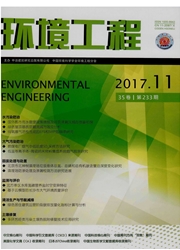

 中文摘要:
中文摘要:
建筑作为三大高耗能产业之一,研究其碳排放对社会经济、生态可持续发展具有重要意义。综合分析我国城镇、农村人口数量、人均住宅建筑面积的发展趋势,对2012—2050年城乡住宅面积进行预测。结合国内外文献,将建筑物化阶段碳排放源分为建材、运输、现场施工3个方面,得到剪力墙结构、钢混框架结构和砖混结构建筑在物化阶段的单位面积碳排放量。计算得到2012—2050年我国城乡新建住宅建筑面积及其物化阶段的碳排放趋势。城镇新建住宅建筑物化阶段碳排量远胜于农村,其达峰节点迟于农村。合理控制住宅建筑增加速度、延长建筑使用年限可有效减少住宅建筑物化阶段碳排量;使用绿色低碳建材和清洁能源,提高施工机械效率是低碳建筑物化阶段的研究重点。
 英文摘要:
英文摘要:
Building is one of three high energy intensive industries,it has great significance to study the carbon emissions of buildings. With the comprehensive analysis of the trend of urban and rural population,per capita housing area was forecast in the urban and rural residential area from 2012—2050 in China. Based on the literature both in China and abroad,the building carbon emissions at embodies stage could be divided into building materials,transportation,construction on site. The carbon emissions of per capita housing area of shear wall structure,reinforced concrete frame structures,brick-concrete structure were conducted. The paper calculated the urban and rural new housing area and the carbon emissions at embodies stage from2012—2050 in China. The carbon emissions of urban new buildings was much more than rural. The point of carbon emissions peak of urban new building was later than rural. Control the increase speed of residential building reasonably and extend life of the residential building could reduce carbon emissions at embodies stage effectively. Using green building materials and clean energy and improving the efficiency of construction machinery were the research focus.
 同期刊论文项目
同期刊论文项目
 同项目期刊论文
同项目期刊论文
 期刊信息
期刊信息
